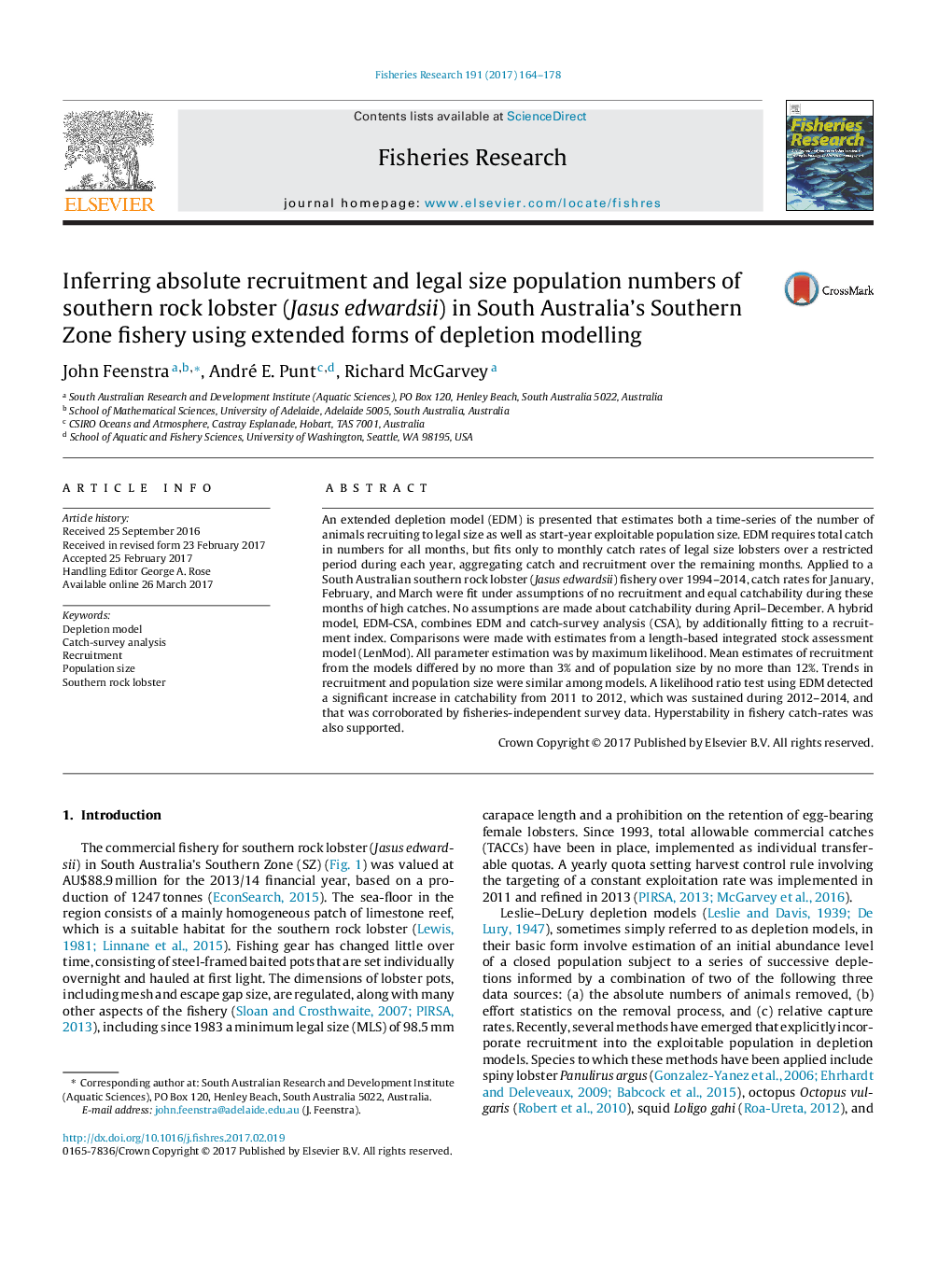| کد مقاله | کد نشریه | سال انتشار | مقاله انگلیسی | نسخه تمام متن |
|---|---|---|---|---|
| 5765627 | 1626779 | 2017 | 15 صفحه PDF | دانلود رایگان |

- A multi-year depletion model is shown that estimates recruitment and population.
- Only legal size catch rates are fit, needed only over a short period within each year.
- Over remaining months of the fishing year uniform catchabilility is not required.
- An extension akin to CSA was developed that requires no catchability constraints.
An extended depletion model (EDM) is presented that estimates both a time-series of the number of animals recruiting to legal size as well as start-year exploitable population size. EDM requires total catch in numbers for all months, but fits only to monthly catch rates of legal size lobsters over a restricted period during each year, aggregating catch and recruitment over the remaining months. Applied to a South Australian southern rock lobster (Jasus edwardsii) fishery over 1994-2014, catch rates for January, February, and March were fit under assumptions of no recruitment and equal catchability during these months of high catches. No assumptions are made about catchability during April-December. A hybrid model, EDM-CSA, combines EDM and catch-survey analysis (CSA), by additionally fitting to a recruitment index. Comparisons were made with estimates from a length-based integrated stock assessment model (LenMod). All parameter estimation was by maximum likelihood. Mean estimates of recruitment from the models differed by no more than 3% and of population size by no more than 12%. Trends in recruitment and population size were similar among models. A likelihood ratio test using EDM detected a significant increase in catchability from 2011 to 2012, which was sustained during 2012-2014, and that was corroborated by fisheries-independent survey data. Hyperstability in fishery catch-rates was also supported.
Journal: Fisheries Research - Volume 191, July 2017, Pages 164-178